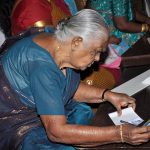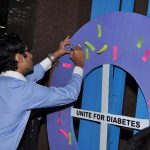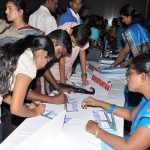WHY CHARITY FOR DIABETES?
1 million Indians die every year due to diabetes. This happens due to complications that could have been prevented by timely treatment. Lack of access to correct diagnosis at the right time and lack of money to buy medicines and insulin is the reason for the high death rate.
There has been a significant rise in the prevalence of diabetes in India during the past three decades. Presently India ranks second after China in diabetes numbers globally. There are more than 73 million people with diabetes in India and diabetes affects about 7.0% of the adult population (1). India is expected to surpass China soon and have the largest number of people with diabetes according to the International Diabetes Federation (1).
As it is a long-lasting disease with serious consequences, diabetes requires appropriate and timely intervention. If left untreated, diabetes can reduce the life expectancy by about 6-8 years. It is also a major cause of blindness, kidney disease, heart disease, strokes, limb amputations and other significant health problems. Unfortunately almost half of the individuals affected by diabetes remain undiagnosed. Early detection of diabetes and its complications and providing prompt and sustained care, irrespective of the ability to pay would significantly reduce the burden to diabetes in India.
Unfortunately, the diabetes epidemic in India is now moving to the poor especially in the more affluent states of India including Tamil Nadu as shown by the ICMR INDIAB study results published in Lancet, Diabetes Endocrinology by our group (2). As 80% of health care is ‘out of pocket’ in India, financial constraints restrict access to high-quality treatment resources. Studies in India show that up to 25 – 30% of a poor person’s income will be taken up by diabetes treatment costs alone (3,4). While the government does provide free treatment at its clinics, the long queues, waiting times and non-availability of health care professionals and/ or medicines often discourage people from attending these centres. Hence there is a need for free charitable clinics run by non-governmental organizations and charitable trust to help the poor and needy patients. ‘Diabetes International Research Education and Charitable Trust’ (‘DIRECT’ for short) was set up as a Charitable Trust for this purpose.
References
- International Diabetes Federation. IDFDiabetes Atlas Eighth Edition 2017, Brussels,Belgium,2017. Available at http://www.diabetesatlas.org/resources/2017-atlas.html/ [Accessed on 18th March 2018].
- Anjana RM, Deepa M, Pradeepa R, Mahanta J, Narain K, Das HK, Adhikari P, Rao PV, Saboo B, Kumar A, Bhansali A, John M, Luaia R, Reang T, Ningombam S, Jampa L, Budnah RO, Elangovan N, Subashini R, Venkatesan U, Unnikrishnan R, Das AK, Madhu SV, Ali MK, Pandey A, Dhaliwal RS, Kaur T, Swaminathan S, Mohan V; ICMR–INDIAB Collaborative Study Group. Prevalence of diabetes and prediabetes in 15 states of India: results from the ICMR-INDIAB population-based cross-sectional study. Lancet Diabetes Endocrinol. 2017;5:585-596.
- Kumpatla S, Kothandan H, Tharkar S, Viswanathan V. The costs of treating long-term diabetic complications in a developing country: a study from India. J Assoc Physicians India. 2013;61:102-9.
- Sharma KM, Ranjani H,. Zabetian A, Datta M,. Deepa M, Anand Moses CR,Narayan KMV, Mohan V,Ali MK. Excess cost burden of diabetes in Southern India: a clinic-based, comparative cost-of-illness study. Global Health, Epidemiology and Genomics. 2016; e8: 1 – 8.












0 Comments